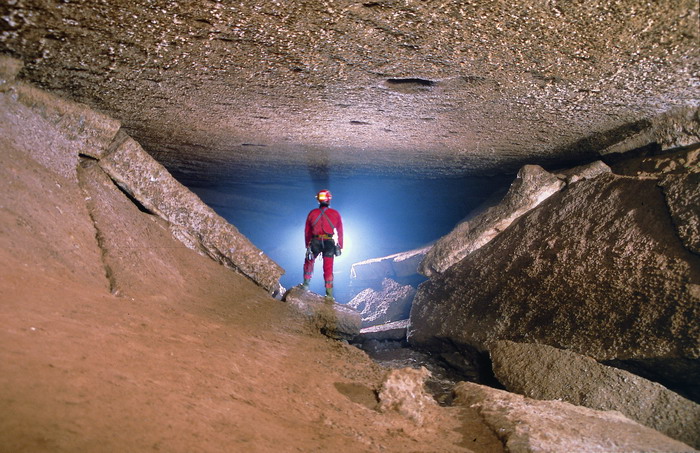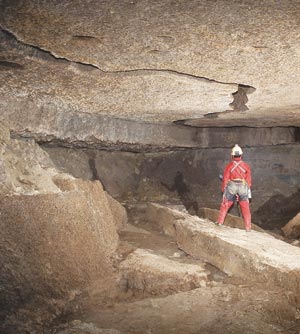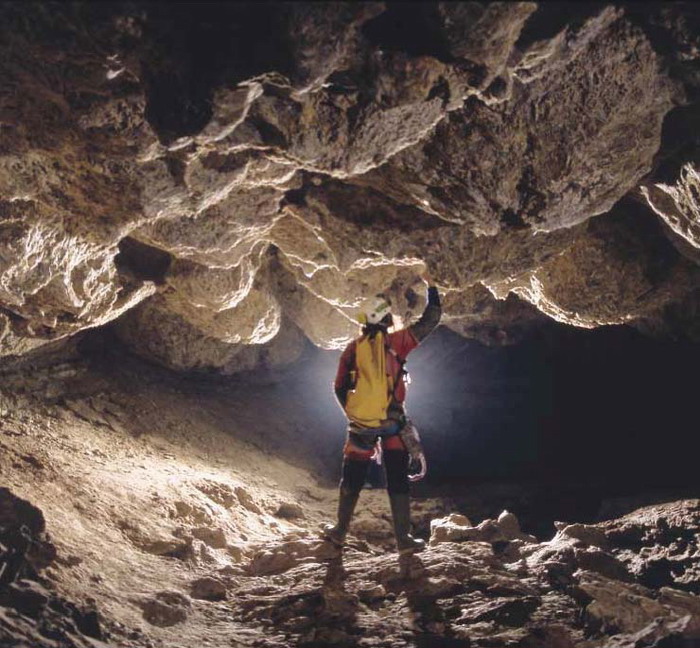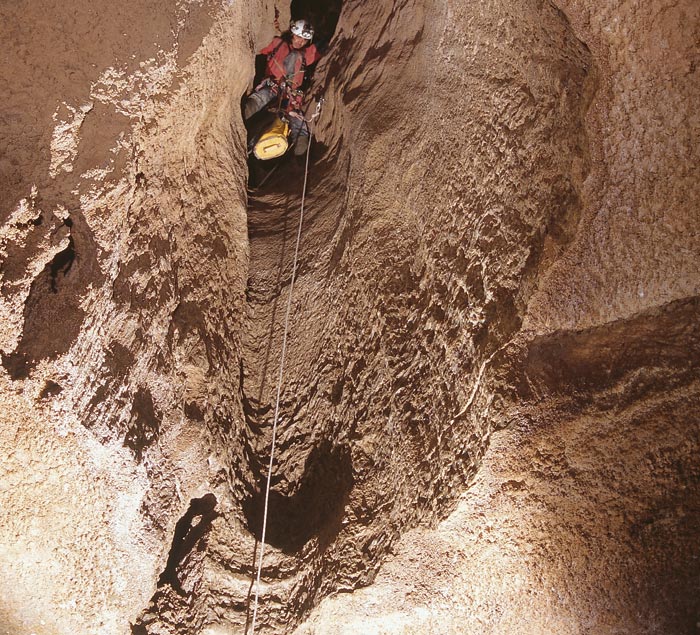
Inter-stratification gallery in the Covadura System
Because of the unusual characteristics of the Sorbas gypsum serie, with its alternating beds of gypsum and clayey marl, the karst has developed in a very peculiar way over much of the gypsum strata. In certain instances, one can see cave passages following the bedding planes and extending over various different levels. This configuration is called inter-stratification karst. It is the configuration seen in the Covadura System, which has more than 4 km galleries spread over six levels and extending more than 120 m depth, connected one to another by numerous pits.
The origin of the inter-stratification karst must be sought in the hydrogeological history of the Sorbas gypsum Karst. Since we are dealing with an alternating sequence of rocks, the aquifer is called a multi-layer aquifer: it contains strata that have been made permeable due to karstification (the gypsum), with impermeable layers (the marl) intercalated between. In this situation, while the water level was relatively high, the whole series remained inundated (phreatic conditions), the flow of water was slow and only the gypsum layers dissolved, forming tubes with circular cross-sections (ceiling channels). Later, the piezometric level slowly fell, gradually giving way to vadose conditions, in which the flow of water was vertical, sporadic and rapid, but the galleries were not flooded. These conditions permitted the erosion of the marly layers into the configuration of the galleries we see today and is the reason that many galleries in the Sorbas Karst are triangular in section (Figure 10).

Inter-stratification gallery in the Covadura System

Celing channels in the Covadura passages

Inter-stratification gallery in the Covadura System

Celling channels and gypsum supercones in the Covadura passages

Pits through the different levels of the Covadura System

Figure 10